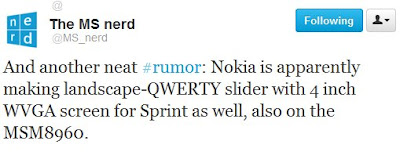Microsoft’s Windows Phone has come a long way. One year and a half following the initial launch of the platform, the first two LTE-enabled devices came to the market.
This is a key milestone for Microsoft and its mobile platform, which is still lagging behind rivals Android and iOS, as well as for Nokia, which has announced plans to adopt the OS roughly a year ago, but already unveiled four devices powered by it.
Microsoft, Nokia and AT&T are working together for the marketing of Lumia 900, and have already launched the
Smartphone Beta Test advertising campaign, as well as Free-Time Machines (FTMs) to offer users the possibility to win numerous prizes, including Windows Phones.
“This LTE launch is a big milestone here in the U.S. and there is some great momentum overseas as well,” says Terry Myerson, corporate vice president of Microsoft’s Windows Phone Division.
“As many media have already commented, this is a major milestone for Nokia, for our partnership with Microsoft and for the Windows Phone ecosystem,” says Jo Harlow, executive vice president, Smart Devices, at Nokia.
Nokia Lumia 900 has achieved what AT&T calls “hero status,” which means that it will be used as the primary device in marketing for a given promotional period, Michael Woodward, vice president, Mobile Phone Portfolio, AT&T Mobility, explains.
Along with TITAN II, the Lumia 900 will provide users not only with great data transfer speeds on the carrier’s network, but also with the latest Windows Phone features and enhancements.
According to Microsoft, however, Lumia 900 marks only the beginning of a new journey on the evolution of the Windows Phone.
The company is determined to make the platform available on more countries around the world than before, and will also work with partners on loading it one newer, better hardware.
“The Nokia Lumia 900 shows what can happen when companies with different areas of expertise come together to make something great,” Myerson says.
“Since we formed our partnership just over a year ago, we’ve launched four Lumia phones and expanded into countries all over the world, most recently China. Based on the progress we’ve accomplished so far, the future is very bright.”
 Unfortunately, those who already use a previous iteration of the OfficeSuite Pro and wish to upgrade to the latest version will have to pay $9.99 USD.
Unfortunately, those who already use a previous iteration of the OfficeSuite Pro and wish to upgrade to the latest version will have to pay $9.99 USD.


 4/09/2012 10:28:00 PM
4/09/2012 10:28:00 PM
 dannzfay
dannzfay















































